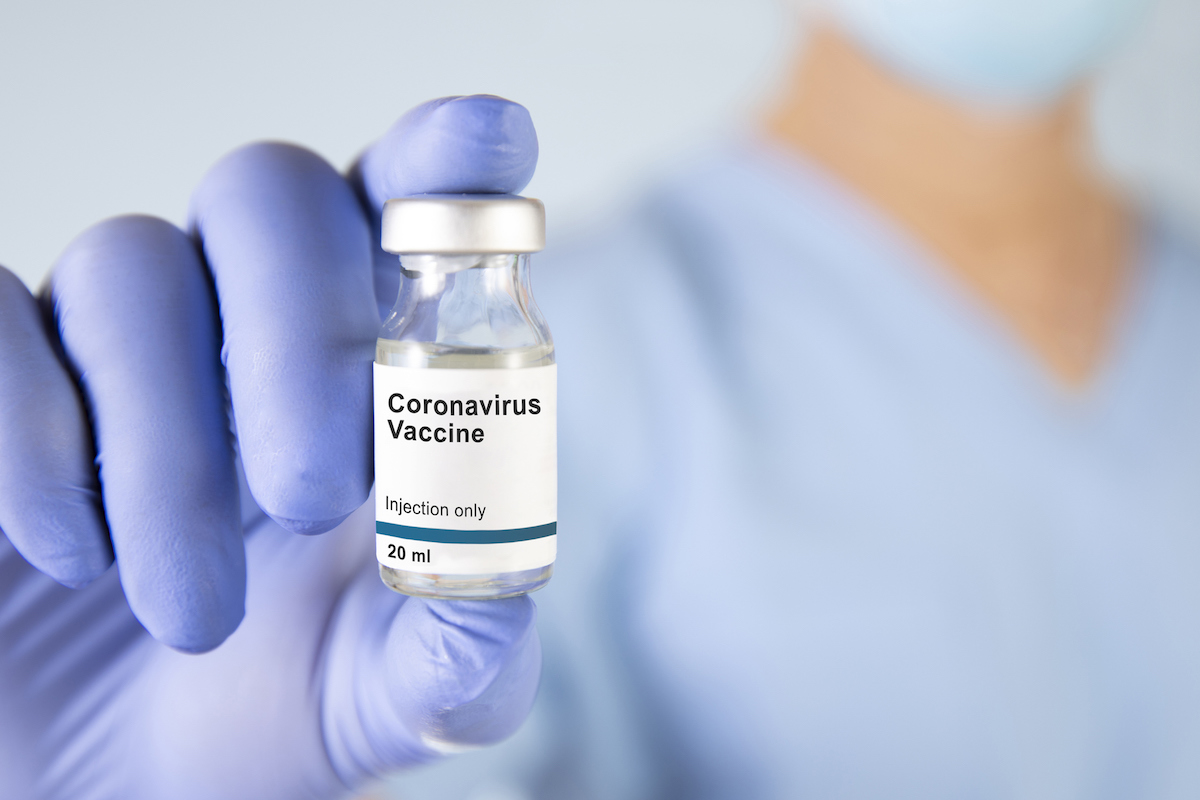<< Back
What’s Next After the Pfizer Vaccine? Here Are the Other Vaccine Candidates

December 14, 2020
The world needs more than the Pfizer vaccine to stop COVID-19. Some vaccines, like Pfizer’s, are difficult to store. Others might not be ideal for all ages or ethnic groups. Preexisting medical conditions might limit vaccine choices for some people, too.
But to stop COVID-19, most people will need a vaccine.
“Seventy percent of the world’s population will need to be immunized by the COVID-19 vaccine to have ‘herd immunity,'” says Dr. Faiqa Cheema, assistant director of general infectious disease with Hartford Hospital, “and even after the vaccine program rolls out, wearing face-coverings and some form of social distancing will still be vital.”
Here’s a look at the four vaccine candidates most likely to become available to Americans in the coming months.
Pfizer-BioNTech
The first COVID-19 vaccine approved for emergency use by the Food and Drug Administration uses a new technology called messenger RNA, or mRNA. It contains a molecule coded for COVID-19 so that, when introduced within the body, the immune system recognizes the antigen and prepares to fight the virus. (Learn more about how mRNA works here.)
“Past vaccines that were made of dead or live attenuated viruses were grown in petri dishes, which is time-consuming,” says Dr. Michelle McDade, Associate Chief of the Emergency Department at The Hospital of Central Connecticut in New Britain, “and then purified to a medical grade, which is also time-consuming. Every step had great potential for error, which took additional time to rectify.”
Type: mRNA.
Efficacy: 95 percent (phase 3 trials).
Doses: 2 (28 days apart).
Storage: minus-94 degrees in special freezers.
Moderna
An mRNA vaccine, likely the second to approved for emergency use in the United States. Authorization is expected shortly after a public FDA hearing by an independent panel scheduled for Dec. 17.
Type: mRNA.
Efficacy: 94.5 percent (phase 3 trials).
Doses: 2 (28 days apart).
Storage: Stable at 36-46 degrees, a typical refrigerator, for up to 30 days. Will last for up to six months at minus-4 degrees.
AstraZeneca-Oxford University
Vaccitech, associated with Oxford, developed technology that uses a genetically modified common-cold virus (adenovirus) that usually infects chimpanzees. With this technology, the AstraZeneca vaccine produces the spike protein in human cells that prompts an immune-system attacks of the virus that causes COVID-19.
It’s uncertain when this vaccine will receive emergency use authorization from the FDA, but January remains the earliest scenario. If approved, if would be the first adenovirus-vectored vaccine for human use in the United States.
Type: Adenovirus-vectored.
Efficacy: up to 90 percent (trials in the United Kingdom and Brazil).
Doses: 2 (28 days apart).
Storage: Stable at 36-46 degrees, a typical refrigerator, for at least six months.
Johnson & Johnson
The company’s AdVac technology, similar to the AstraZeneca adenovirus-vectored platform, was previously used to develop vaccines for Ebola (approved), Zika, respiratory syncytial virus and HIV (investigational). Look for emergency use authorization from the FDA in March or April.
Type: Adenovirus-vectored.
Efficacy: Undetermined (still in Phase 3 trial).
Doses: 1.
Storage: Expected to remain stable for up to two years at about minus-4 degrees. Once distributed, it remains stable from 35.6 degrees to 46.4 degrees for up to three months.
For more information on the COVID-19 vaccine, click here.